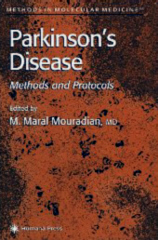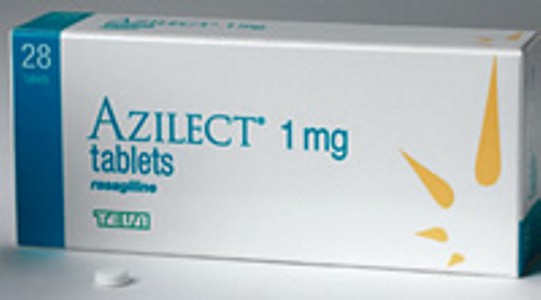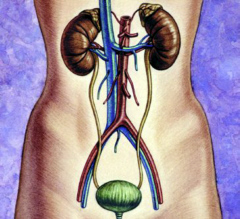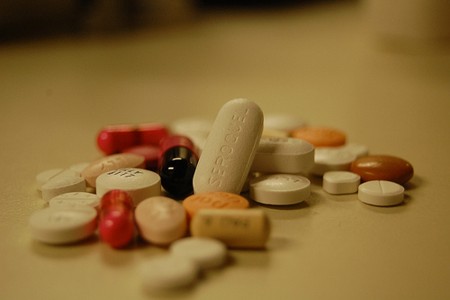|
JUNE 2011
������������������ ������������������������������������������������������������������������������������������������������������������������������
30th June 2011 - New book
PARKINSON'S DISEASE : METHODS AND PROTOCOLS
M. Maral Mouradia
 Publisher's
description : Internationally recognized biomedical investigators describe in
detail the major techniques employed in molecular and cellular studies of
Parkinson's disease and basal ganglia function. Widely varied methods are
covered, including genetic analyses, molecular pathogenetic investigations of
dopaminergic neuronal degeneration, biochemical studies of nigro-striatal neural
circuitry, and molecular therapies, such as gene therapy and neural stem cells.
Parkinson's Disease : Methods and Protocols offers those interested in
Parkinson's the methods needed to effectively exploit the potential of cell and
molecular biology for elucidating disease mechanisms and for speeding the
emergence of more effective therapeutics.
Click here for more details.
For
more books concerning Parkinson's Disease go to
Parkinson's Disease Books. Publisher's
description : Internationally recognized biomedical investigators describe in
detail the major techniques employed in molecular and cellular studies of
Parkinson's disease and basal ganglia function. Widely varied methods are
covered, including genetic analyses, molecular pathogenetic investigations of
dopaminergic neuronal degeneration, biochemical studies of nigro-striatal neural
circuitry, and molecular therapies, such as gene therapy and neural stem cells.
Parkinson's Disease : Methods and Protocols offers those interested in
Parkinson's the methods needed to effectively exploit the potential of cell and
molecular biology for elucidating disease mechanisms and for speeding the
emergence of more effective therapeutics.
Click here for more details.
For
more books concerning Parkinson's Disease go to
Parkinson's Disease Books.
�
29th June 2011 - New research
MALE FEMALE DIFFERENCES
IN PARKINSON'S DISEASE
Maturitas [2011] Jun 24 [Epub ahead of print] (K.P.Roland, J.M.Jakobi, C.Powell,
G.R.Jones)
Complete abstract
There are clearly more men than women with
Parkinson's Disease. In some countries, the ratio of men to women with
Parkinson's Disease is more than 2 to 3 times greater. Only in Russia, and to an
even greater extent in� Japan is Parkinson's Disease clearly more common in
women.
This may be due to the large number of men who died during warfare, rather than
an actual greater prevalence. Men and women also differ in the prevalence of
certain types of
 symptoms.
Rigidity, postural instability, and also dyskinesia caused by L-dopa have all
been found to be more prevalent in females with Parkinson's Disease. Reports
suggest that females with Parkinson's Disease also have different walking
patterns compared to males with Parkinson's Disease, and women who do not have
Parkinson's Disease. Females with Parkinson's Disease also experience increased
freezing when walking when compared to men. Balance is also reduced in females
with Parkinson's Disease in comparison to men with Parkinson's Disease. symptoms.
Rigidity, postural instability, and also dyskinesia caused by L-dopa have all
been found to be more prevalent in females with Parkinson's Disease. Reports
suggest that females with Parkinson's Disease also have different walking
patterns compared to males with Parkinson's Disease, and women who do not have
Parkinson's Disease. Females with Parkinson's Disease also experience increased
freezing when walking when compared to men. Balance is also reduced in females
with Parkinson's Disease in comparison to men with Parkinson's Disease.
In order to refer to this article on its own
click here.
�
27th June 2011 - New research
THE PREVALENCE OF
DROOLING IN PARKINSON'S DISEASE
Journal of Neurology
[2011] Jun 23. [Epub ahead of print] (Kalf JG, Bloem BR, Munneke M.)
Complete abstract
Drooling as symptom of Parkinson's Disease has so far been poorly defined. This
uncertainty is reflected by high variations in published prevalence rates.
Drooling is when saliva flows outside the mouth. Drooling is generally caused by
excessive production of saliva, inability to retain saliva within the mouth, or
problems with swallowing. The aim of this study was to investigate the
prevalence of saliva loss and the accumulation of saliva in Parkinson's Disease
as an initial stage, and diurnal (daytime) drooling versus nocturnal (nighttime)
drooling.
 Of
those people with Parkinson's Disease, 29% had no complaints at all with saliva
control, 43% of them experienced accumulation of saliva or only nocturnal (nighttime)
drooling, and 28% had diurnal (daytime) drooling. Most of those that had daytime
drooling had nighttime drooling as well. The longer somebody had Parkinson's
Disease the more prone they were to nocturnal (nighttime) drooling. Drooling was
independently associated with involuntary mouth opening, and swallowing
complaints. Diurnal (daytime) drooling typically appeared as Parkinson's Disease
got worse. Of
those people with Parkinson's Disease, 29% had no complaints at all with saliva
control, 43% of them experienced accumulation of saliva or only nocturnal (nighttime)
drooling, and 28% had diurnal (daytime) drooling. Most of those that had daytime
drooling had nighttime drooling as well. The longer somebody had Parkinson's
Disease the more prone they were to nocturnal (nighttime) drooling. Drooling was
independently associated with involuntary mouth opening, and swallowing
complaints. Diurnal (daytime) drooling typically appeared as Parkinson's Disease
got worse. In order to refer to this article on its own
click here.
�
25th June 2011 -
New research
RASAGILINE CLINICAL TRIAL RESULTS
Lancet Neurology [2011] 10 (5) : 415-423 (O.Rascol, C.J. Fitzer-Attas, R.Hauser,
J.JankovicJ, A.Lang, J.W.Langston, E. Melamed, W.Poewe, F.Stocchi, E.Tolosa,
E.Eyal, Y.M.Weiss, C. W.Olanow)
Complete abstract
The ADAGIO study investigated whether Rasagiline has disease-modifying effects
in Parkinson's Disease. Rasagiline is a MAO-B inhibitor, that is also known by
the brand name Azilect. For more information go to
Azilect .
Rasagiline 1 mg per day, but not 2 mg per day, was previously shown to have some
effect. The present study reported the secondary analysis. The need for
additional Parkinson's Disease drugs after using Rasagiline occurred in only 9%
of people with both 1mg or 2mg Rasagiline, but 18% when the
initiation
of Rasagiline was delayed for 36 weeks.�
 After 36 weeks both 1mg and 2mg
improved Parkinson's Disease symptoms, but only moderately, just as occurred
with previous studies. Both doses of Rasagiline moderately improved fatigue
and ADL (activities of daily living), with 2mg being better than 1mg.
Mental activity improved slightly using 1mg Rasagiline. Those people that
delayed the use of Rasagiline started to deteriorate prior to
starting Rasagiline, especially in those with more severe symptoms.� In
order to refer to this article on its own
click here. After 36 weeks both 1mg and 2mg
improved Parkinson's Disease symptoms, but only moderately, just as occurred
with previous studies. Both doses of Rasagiline moderately improved fatigue
and ADL (activities of daily living), with 2mg being better than 1mg.
Mental activity improved slightly using 1mg Rasagiline. Those people that
delayed the use of Rasagiline started to deteriorate prior to
starting Rasagiline, especially in those with more severe symptoms.� In
order to refer to this article on its own
click here.
�������������������������������������������������������������������������������������������������������������������������������������������������������������������������������
23rd June
2011 - New research
URINARY DYSFUNCTION IN PARKINSON'S DISEASE
Neurology, Neurosurgery and Psychiatry [2011] June 13 [Epub ahead of print]
(Uchiyama T, Sakakibara R, Yamamoto T, Ito T, Yamaguchi C, Awa Y, Yanagisawa M,
Higuchi Y, Sato Y, Ichikawa T, Yamanishi T, Hattori T, Kuwabara S.)
Complete abstract
Urinary dysfunction is common in Parkinson's Disease, but little was known about
urinary dysfunction in early and untreated Parkinson's Disease. After excluding
those with other conditions that might influence urinary function, patients were
evaluated using a urinary questionnaire and urodynamic studies. Nearly two
thirds (64%) of those people with Parkinson's Disease complained of urinary
symptoms. Over a quarter (28%) had urinary difficulty.
 The main
cause of
urinary difficulty is detrusor underactivity. The detrusor is the muscle that
contracts when urinating to squeeze out urine. This is because Parkinson's
Disease can affect all muscles, including even those used for urinating. Bladder
outlet obstruction was present in 16% of people with Parkinson's Disease. Few
patients experienced quality-of-life impairment owing to urinary dysfunction,
despite the problems it can cause. The urinary symptoms were not correlated with gender, type of Parkinson's Disease, or disease
severity, and so were not likely to worsen over time. In cases with severe
difficulty in urinating, other diagnoses should be considered. In order to refer
to this article on its own
click here. The main
cause of
urinary difficulty is detrusor underactivity. The detrusor is the muscle that
contracts when urinating to squeeze out urine. This is because Parkinson's
Disease can affect all muscles, including even those used for urinating. Bladder
outlet obstruction was present in 16% of people with Parkinson's Disease. Few
patients experienced quality-of-life impairment owing to urinary dysfunction,
despite the problems it can cause. The urinary symptoms were not correlated with gender, type of Parkinson's Disease, or disease
severity, and so were not likely to worsen over time. In cases with severe
difficulty in urinating, other diagnoses should be considered. In order to refer
to this article on its own
click here.
�
17th June
2011 - New research
DRUGS CAUSING PARKINSON'S DISEASE
Movement Disorders [2011] June 14 [Epub ahead of print] (Bondon-Guitton E,
Perez-Lloret S, Bagheri H, Brefel C, Rascol O, Montastruc JL.)
Complete abstract
���������������������������������������������������������������������������������������������������������������������������������������������������������������������������������
A study assessing over 20,000 adverse drug reactions has found those drugs that
can cause or worsen Parkinson's Disease. This is normally described as drug
induced Parkinsonism. Among the suspect drugs,
most involved central dopaminergic antagonists (49%), followed by
antidepressants (8%), calcium channel blockers (5%), peripheral dopaminergic
antagonists (5%), and H1 antihistamines (5%). Cases with lithium, valproic acid,
amiodarone, anticholinesterases, or trimetazidine were also found. Some problems
occurred due to the interaction of other drugs.
 The
majority (60%) of people affected were female. Nearly half of all people
affected were between 60 and 79 years of age. Seriousness was observed in 44% of
cases. Nearly 70% of cases were observed during the first 3 months after
introduction of the "suspect" drug (involving mainly central dopaminergic
antagonists). A second peak (affecting 20% of cases) was found 12 months after
drug introduction (mainly due to calcium channel blockers). The most frequently
reported symptom was rigidity. Improvement was favourable after
partial or complete withdrawal of suspect drugs in 88% of cases. In order to
refer to this article on its own
click here. The
majority (60%) of people affected were female. Nearly half of all people
affected were between 60 and 79 years of age. Seriousness was observed in 44% of
cases. Nearly 70% of cases were observed during the first 3 months after
introduction of the "suspect" drug (involving mainly central dopaminergic
antagonists). A second peak (affecting 20% of cases) was found 12 months after
drug introduction (mainly due to calcium channel blockers). The most frequently
reported symptom was rigidity. Improvement was favourable after
partial or complete withdrawal of suspect drugs in 88% of cases. In order to
refer to this article on its own
click here.
�
13th June 2011 - News release
LCIG CLINICAL TRIAL DATA FOR PARKINSON'S
DISEASE
Abbott
have provided details of a Phase 3 clinical trial of LCIG in Parkinson's
Disease. LCIG is levodopa-carbidopa intestinal gel.
Levodopa-carbidopa is the same combination used in Sinemet. LCIG is infused
directly and continuously during daytime hours into the small intestine via a
portable pump connected to a surgically-implanted gastric tube. It was thought
that continuous delivery may help reduce peaks in drug levels
 due
to the inconsistent absorption that happens with orally consumed drugs. After
12 weeks in to the 54 week trial, patients reported an average of 3.9 fewer
hours of "off" time and 4.6 more hours of "on" time without dyskinesias. Self
reporting after surgery is prone to placebo effect. Figures for a
placebo were not given, thus preventing an assessment of how much improvement there was beyond that of a placebo. due
to the inconsistent absorption that happens with orally consumed drugs. After
12 weeks in to the 54 week trial, patients reported an average of 3.9 fewer
hours of "off" time and 4.6 more hours of "on" time without dyskinesias. Self
reporting after surgery is prone to placebo effect. Figures for a
placebo were not given, thus preventing an assessment of how much improvement there was beyond that of a placebo.
Adverse events occurred in 87% of patients, and appeared to
be largely related to the surgical procedure. The most common adverse events
were : abdominal pain (30%), complications of device insertion (21%), procedural
pain (17%),
constipation (13%), nausea (13%), excessive granulation tissue (13%), fall
(10%), dyskinesia (10%), insomnia (10%), post-operative wound infection (10%),
and anxiety (10%). The most severe complications from surgery were :
abdominal inflammation (3%),� and gas or air in the peritoneal cavity (5%).
For more information go to the
News release. In order to refer to this
article on its own
click here.
�
8th
June 2011 - New book
THE HAPPINESS OF PURSUIT : A FATHER'S COURAGE,
A SON'S LOVE AND LIFE'S STEEPEST CLIMB
Davis Phinney, Austin Murphy
 Publisher's
description : Davis Phinney was one of America�s most successful cyclists. But
after years of feeling off, he was diagnosed with early-onset Parkinson�s. The
body that had been his ally was now something else : a prison. Davis sought to
overcome his Parkinson�s by reaching back to what had made him so successful on
the bike. The news of his diagnosis began a dark period, but there was also
light. His son�s own bike-racing career was taking off. Determined to beat the
Body Snatcher, Davis underwent deep brain stimulation. His symptoms abated
enough for him to see his son compete in the Beijing Olympics. With humor and
grace, Phinney weaves the narrative of his battle with Parkinson�s with tales
from his cycling career and from his son�s emerging career.
Click here for more details. In order to refer to this article
on its own
click here.
For
more books concerning Parkinson's Disease go to
Parkinson's Disease Books. Publisher's
description : Davis Phinney was one of America�s most successful cyclists. But
after years of feeling off, he was diagnosed with early-onset Parkinson�s. The
body that had been his ally was now something else : a prison. Davis sought to
overcome his Parkinson�s by reaching back to what had made him so successful on
the bike. The news of his diagnosis began a dark period, but there was also
light. His son�s own bike-racing career was taking off. Determined to beat the
Body Snatcher, Davis underwent deep brain stimulation. His symptoms abated
enough for him to see his son compete in the Beijing Olympics. With humor and
grace, Phinney weaves the narrative of his battle with Parkinson�s with tales
from his cycling career and from his son�s emerging career.
Click here for more details. In order to refer to this article
on its own
click here.
For
more books concerning Parkinson's Disease go to
Parkinson's Disease Books.
�
1st June
2011 - New research
ANTI-OXIDANTS LESSEN THE RISK OF PARKINSON'S
DISEASE
European Journal of Neurology [2011] 18 (1) : 106-113 (Y.Miyake, W.Fukushima,
K.Tanaka, S.Sasaki, C.Kiyohara, Y.Tsuboi, T.Yamada, T.Oeda, T.Miki, N.Kawamura,
N.Sakae, H.Fukuyama, Y.Hirota, M.Nagai)
Complete abstract
Antioxidant vitamins are expected to protect cells from oxidative damage in
Parkinson's Disease by neutralizing the effects of reactive oxygen. However,
evidence regarding the association between antioxidant vitamin intake and
Parkinson's Disease is limited and inconsistent. So researchers investigated the
relationship between the dietary
 intake
of selected antioxidant vitamins, vegetables and fruit and the risk of
Parkinson's Disease. Higher consumption of vitamin E and �-carotene (a form of
vitamin A) were significantly associated with a reduced risk of Parkinson's
Disease - down to only 45% for vitamin E, and down to 56% for �-carotene.
However, this relationship was only significant in women. The lesser likelihood
of Parkinson's Disease was not related to the intake of vitamin C, a-carotene,
cryptoxanthin, green and yellow vegetables, other vegetables, or fruit. In order
to refer to this article on its own
click here. intake
of selected antioxidant vitamins, vegetables and fruit and the risk of
Parkinson's Disease. Higher consumption of vitamin E and �-carotene (a form of
vitamin A) were significantly associated with a reduced risk of Parkinson's
Disease - down to only 45% for vitamin E, and down to 56% for �-carotene.
However, this relationship was only significant in women. The lesser likelihood
of Parkinson's Disease was not related to the intake of vitamin C, a-carotene,
cryptoxanthin, green and yellow vegetables, other vegetables, or fruit. In order
to refer to this article on its own
click here.
�
��
|
.gif)
.gif)
 Publisher's
description : Internationally recognized biomedical investigators describe in
detail the major techniques employed in molecular and cellular studies of
Parkinson's disease and basal ganglia function. Widely varied methods are
covered, including genetic analyses, molecular pathogenetic investigations of
dopaminergic neuronal degeneration, biochemical studies of nigro-striatal neural
circuitry, and molecular therapies, such as gene therapy and neural stem cells.
Parkinson's Disease : Methods and Protocols offers those interested in
Parkinson's the methods needed to effectively exploit the potential of cell and
molecular biology for elucidating disease mechanisms and for speeding the
emergence of more effective therapeutics.
Publisher's
description : Internationally recognized biomedical investigators describe in
detail the major techniques employed in molecular and cellular studies of
Parkinson's disease and basal ganglia function. Widely varied methods are
covered, including genetic analyses, molecular pathogenetic investigations of
dopaminergic neuronal degeneration, biochemical studies of nigro-striatal neural
circuitry, and molecular therapies, such as gene therapy and neural stem cells.
Parkinson's Disease : Methods and Protocols offers those interested in
Parkinson's the methods needed to effectively exploit the potential of cell and
molecular biology for elucidating disease mechanisms and for speeding the
emergence of more effective therapeutics.
 symptoms.
Rigidity, postural instability, and also dyskinesia caused by L-dopa have all
been found to be more prevalent in females with Parkinson's Disease. Reports
suggest that females with Parkinson's Disease also have different walking
patterns compared to males with Parkinson's Disease, and women who do not have
Parkinson's Disease. Females with Parkinson's Disease also experience increased
freezing when walking when compared to men. Balance is also reduced in females
with Parkinson's Disease in comparison to men with Parkinson's Disease.
symptoms.
Rigidity, postural instability, and also dyskinesia caused by L-dopa have all
been found to be more prevalent in females with Parkinson's Disease. Reports
suggest that females with Parkinson's Disease also have different walking
patterns compared to males with Parkinson's Disease, and women who do not have
Parkinson's Disease. Females with Parkinson's Disease also experience increased
freezing when walking when compared to men. Balance is also reduced in females
with Parkinson's Disease in comparison to men with Parkinson's Disease.  Of
those people with Parkinson's Disease, 29% had no complaints at all with saliva
control, 43% of them experienced accumulation of saliva or only nocturnal (nighttime)
drooling, and 28% had diurnal (daytime) drooling. Most of those that had daytime
drooling had nighttime drooling as well. The longer somebody had Parkinson's
Disease the more prone they were to nocturnal (nighttime) drooling. Drooling was
independently associated with involuntary mouth opening, and swallowing
complaints. Diurnal (daytime) drooling typically appeared as Parkinson's Disease
got worse.
Of
those people with Parkinson's Disease, 29% had no complaints at all with saliva
control, 43% of them experienced accumulation of saliva or only nocturnal (nighttime)
drooling, and 28% had diurnal (daytime) drooling. Most of those that had daytime
drooling had nighttime drooling as well. The longer somebody had Parkinson's
Disease the more prone they were to nocturnal (nighttime) drooling. Drooling was
independently associated with involuntary mouth opening, and swallowing
complaints. Diurnal (daytime) drooling typically appeared as Parkinson's Disease
got worse.  After 36 weeks both 1mg and 2mg
improved Parkinson's Disease symptoms, but only moderately, just as occurred
with previous studies. Both doses of Rasagiline moderately improved fatigue
and ADL (activities of daily living), with 2mg being better than 1mg.
Mental activity improved slightly using 1mg Rasagiline. Those people that
delayed the use of Rasagiline started to deteriorate prior to
starting Rasagiline, especially in those with more severe symptoms.� In
order to refer to this article on its own
After 36 weeks both 1mg and 2mg
improved Parkinson's Disease symptoms, but only moderately, just as occurred
with previous studies. Both doses of Rasagiline moderately improved fatigue
and ADL (activities of daily living), with 2mg being better than 1mg.
Mental activity improved slightly using 1mg Rasagiline. Those people that
delayed the use of Rasagiline started to deteriorate prior to
starting Rasagiline, especially in those with more severe symptoms.� In
order to refer to this article on its own
 The main
cause of
urinary difficulty is detrusor underactivity. The detrusor is the muscle that
contracts when urinating to squeeze out urine. This is because Parkinson's
Disease can affect all muscles, including even those used for urinating. Bladder
outlet obstruction was present in 16% of people with Parkinson's Disease. Few
patients experienced quality-of-life impairment owing to urinary dysfunction,
despite the problems it can cause. The urinary symptoms were not correlated with gender, type of Parkinson's Disease, or disease
severity, and so were not likely to worsen over time. In cases with severe
difficulty in urinating, other diagnoses should be considered. In order to refer
to this article on its own
The main
cause of
urinary difficulty is detrusor underactivity. The detrusor is the muscle that
contracts when urinating to squeeze out urine. This is because Parkinson's
Disease can affect all muscles, including even those used for urinating. Bladder
outlet obstruction was present in 16% of people with Parkinson's Disease. Few
patients experienced quality-of-life impairment owing to urinary dysfunction,
despite the problems it can cause. The urinary symptoms were not correlated with gender, type of Parkinson's Disease, or disease
severity, and so were not likely to worsen over time. In cases with severe
difficulty in urinating, other diagnoses should be considered. In order to refer
to this article on its own
 The
majority (60%) of people affected were female. Nearly half of all people
affected were between 60 and 79 years of age. Seriousness was observed in 44% of
cases. Nearly 70% of cases were observed during the first 3 months after
introduction of the "suspect" drug (involving mainly central dopaminergic
antagonists). A second peak (affecting 20% of cases) was found 12 months after
drug introduction (mainly due to calcium channel blockers). The most frequently
reported symptom was rigidity. Improvement was favourable after
partial or complete withdrawal of suspect drugs in 88% of cases. In order to
refer to this article on its own
The
majority (60%) of people affected were female. Nearly half of all people
affected were between 60 and 79 years of age. Seriousness was observed in 44% of
cases. Nearly 70% of cases were observed during the first 3 months after
introduction of the "suspect" drug (involving mainly central dopaminergic
antagonists). A second peak (affecting 20% of cases) was found 12 months after
drug introduction (mainly due to calcium channel blockers). The most frequently
reported symptom was rigidity. Improvement was favourable after
partial or complete withdrawal of suspect drugs in 88% of cases. In order to
refer to this article on its own
 due
to the inconsistent absorption that happens with orally consumed drugs. After
12 weeks in to the 54 week trial, patients reported an average of 3.9 fewer
hours of "off" time and 4.6 more hours of "on" time without dyskinesias. Self
reporting after surgery is prone to placebo effect. Figures for a
placebo were not given, thus preventing an assessment of how much improvement there was beyond that of a placebo.
due
to the inconsistent absorption that happens with orally consumed drugs. After
12 weeks in to the 54 week trial, patients reported an average of 3.9 fewer
hours of "off" time and 4.6 more hours of "on" time without dyskinesias. Self
reporting after surgery is prone to placebo effect. Figures for a
placebo were not given, thus preventing an assessment of how much improvement there was beyond that of a placebo.  Publisher's
description : Davis Phinney was one of America�s most successful cyclists. But
after years of feeling off, he was diagnosed with early-onset Parkinson�s. The
body that had been his ally was now something else : a prison. Davis sought to
overcome his Parkinson�s by reaching back to what had made him so successful on
the bike. The news of his diagnosis began a dark period, but there was also
light. His son�s own bike-racing career was taking off. Determined to beat the
Body Snatcher, Davis underwent deep brain stimulation. His symptoms abated
enough for him to see his son compete in the Beijing Olympics. With humor and
grace, Phinney weaves the narrative of his battle with Parkinson�s with tales
from his cycling career and from his son�s emerging career.
Publisher's
description : Davis Phinney was one of America�s most successful cyclists. But
after years of feeling off, he was diagnosed with early-onset Parkinson�s. The
body that had been his ally was now something else : a prison. Davis sought to
overcome his Parkinson�s by reaching back to what had made him so successful on
the bike. The news of his diagnosis began a dark period, but there was also
light. His son�s own bike-racing career was taking off. Determined to beat the
Body Snatcher, Davis underwent deep brain stimulation. His symptoms abated
enough for him to see his son compete in the Beijing Olympics. With humor and
grace, Phinney weaves the narrative of his battle with Parkinson�s with tales
from his cycling career and from his son�s emerging career.
 intake
of selected antioxidant vitamins, vegetables and fruit and the risk of
Parkinson's Disease. Higher consumption of vitamin E and �-carotene (a form of
vitamin A) were significantly associated with a reduced risk of Parkinson's
Disease - down to only 45% for vitamin E, and down to 56% for �-carotene.
However, this relationship was only significant in women. The lesser likelihood
of Parkinson's Disease was not related to the intake of vitamin C, a-carotene,
cryptoxanthin, green and yellow vegetables, other vegetables, or fruit. In order
to refer to this article on its own
intake
of selected antioxidant vitamins, vegetables and fruit and the risk of
Parkinson's Disease. Higher consumption of vitamin E and �-carotene (a form of
vitamin A) were significantly associated with a reduced risk of Parkinson's
Disease - down to only 45% for vitamin E, and down to 56% for �-carotene.
However, this relationship was only significant in women. The lesser likelihood
of Parkinson's Disease was not related to the intake of vitamin C, a-carotene,
cryptoxanthin, green and yellow vegetables, other vegetables, or fruit. In order
to refer to this article on its own